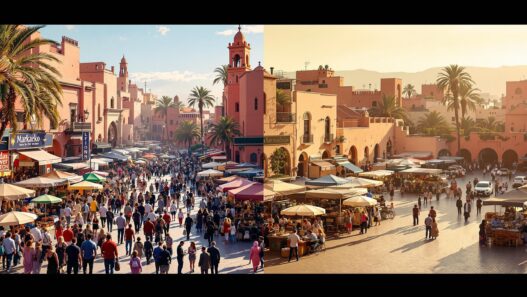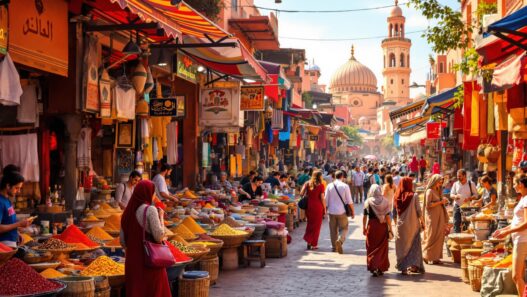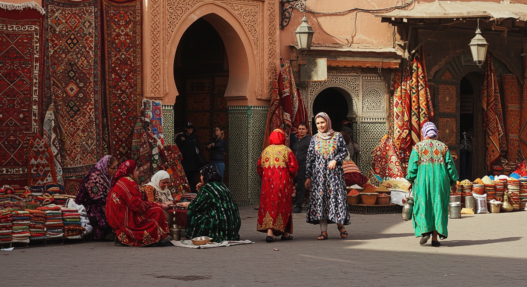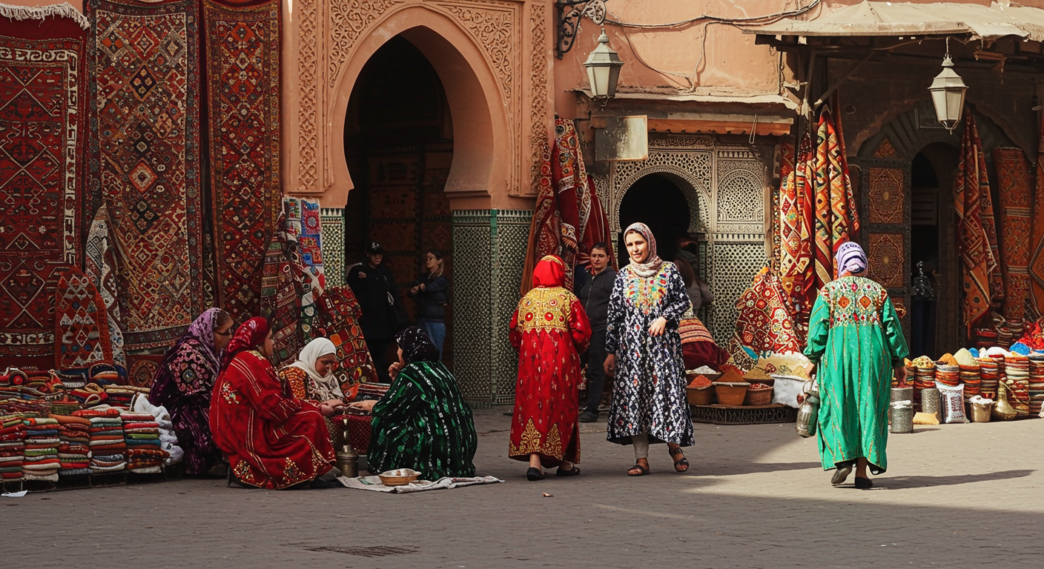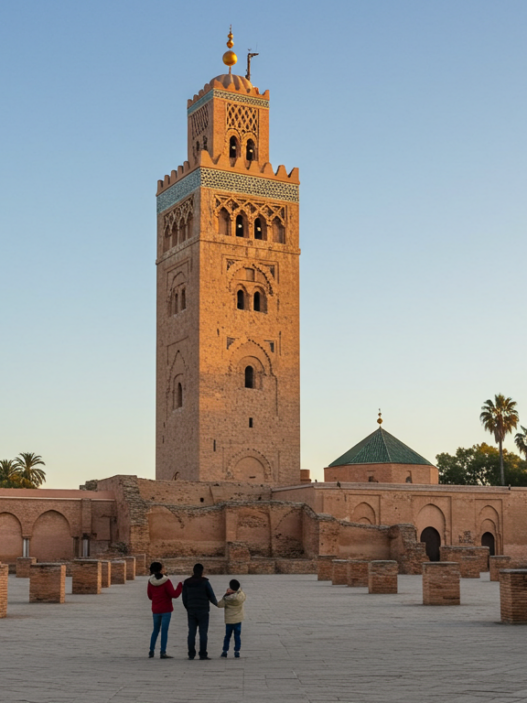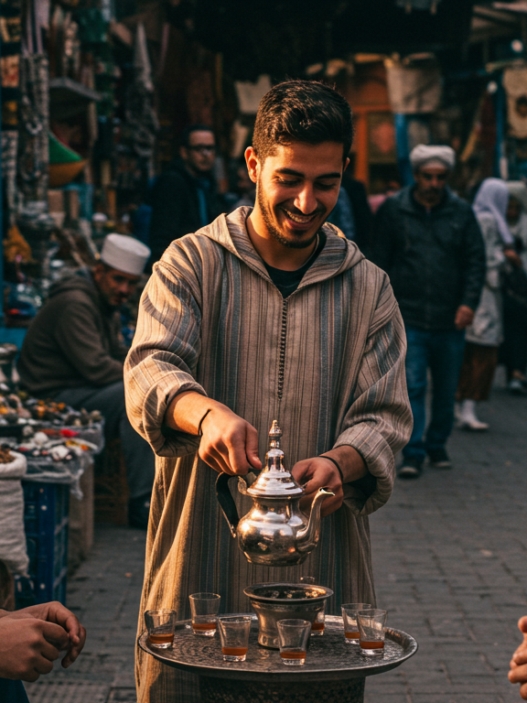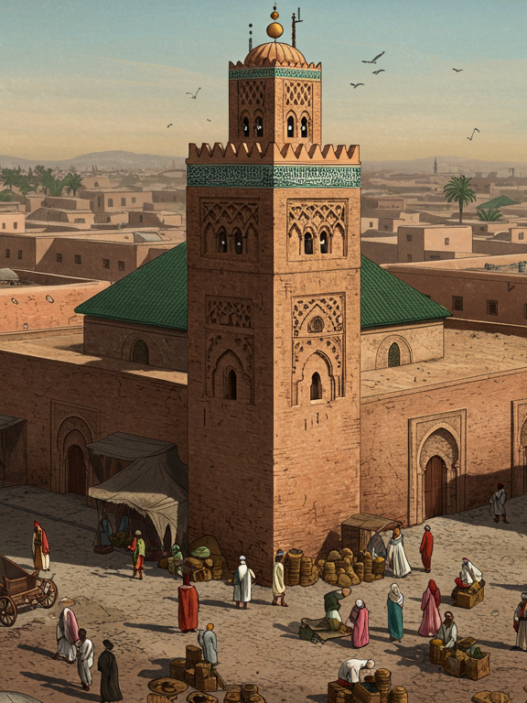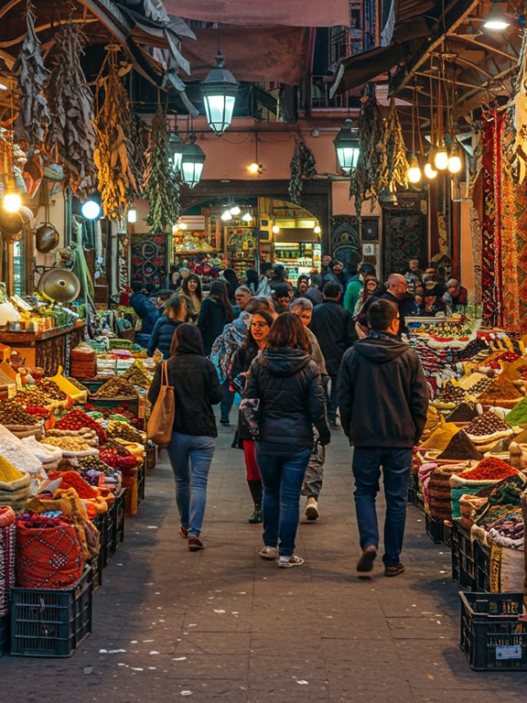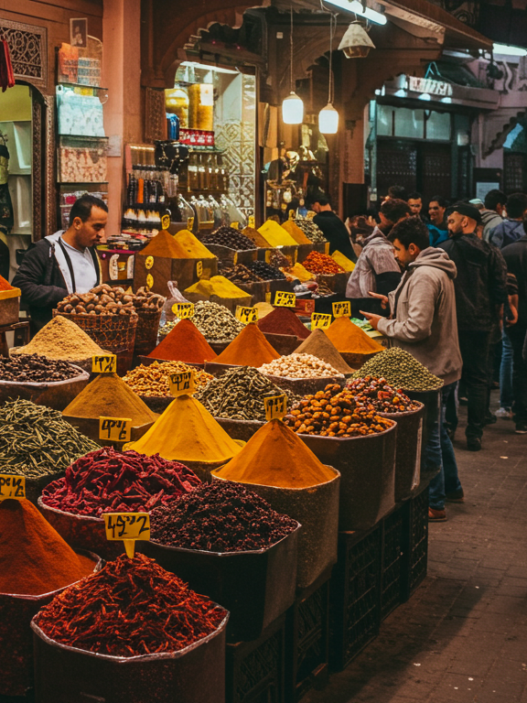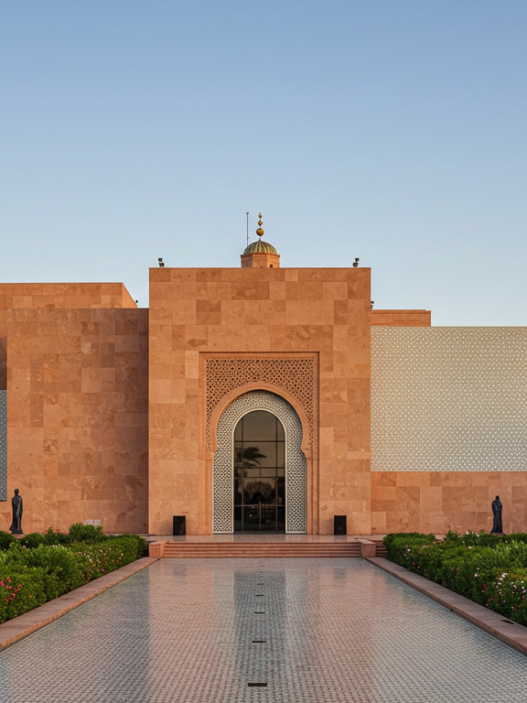Marrakesh, known as the Red City, is a vibrant melting pot of cultures, with the Berber influence deeply embedded in its identity. The Berbers, also known as the Amazigh, are the indigenous people of North Africa, whose traditions, art, and way of life have shaped Marrakesh’s essence for centuries. From architecture to cuisine, their mark is evident in every corner of this enchanting city.
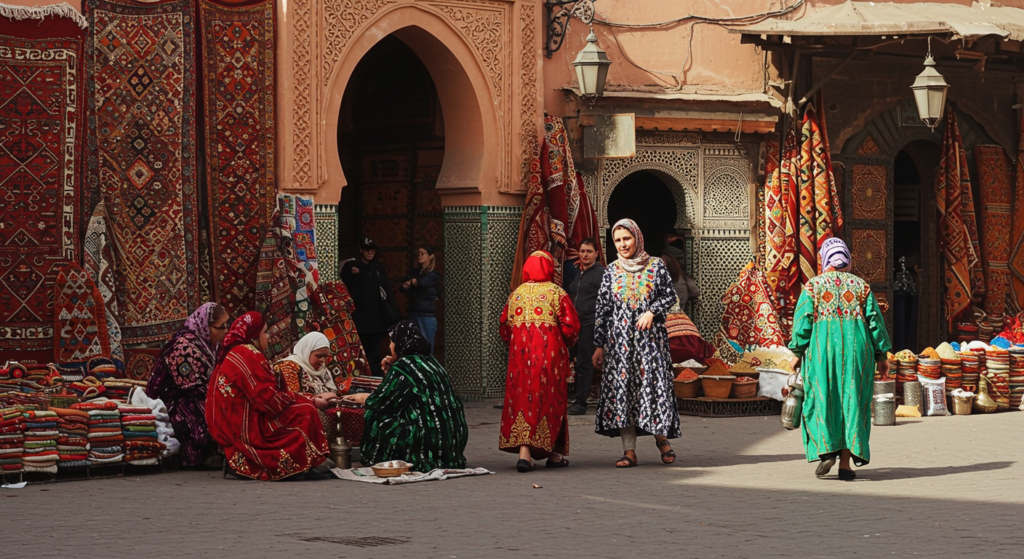
Berber Roots in Marrakesh
The Berbers were among the earliest settlers in the Marrakesh region, long before the city was founded in 1070. Their connection to the land is reflected in their agricultural practices, trade routes, and craftsmanship. Berber villages dotting the Atlas Mountains have supplied Marrakesh with goods, traditions, and a resilient spirit that continues to thrive today.
Berber Architecture: A Testament to Timeless Craft
Berber architectural styles are prominent in Marrakesh, characterized by earthy tones and practical designs.
- The Medina Walls: The iconic red walls of Marrakesh’s Medina owe their hue and construction techniques to Berber traditions, using red clay and mud bricks.
- Kasbahs and Riads: These structures showcase Berber ingenuity. Kasbahs served as fortified homes for Berber leaders, while riads, with their central courtyards, highlight the emphasis on privacy and harmony with nature.
- Traditional Hammams: The city’s public bathhouses stem from Berber practices of cleanliness and social interaction, with many still following ancient designs and techniques.
These architectural marvels serve as a bridge between Marrakesh’s past and present, allowing visitors to experience the enduring legacy of Berber craftsmanship.
Berber Cuisine: A Feast for the Senses
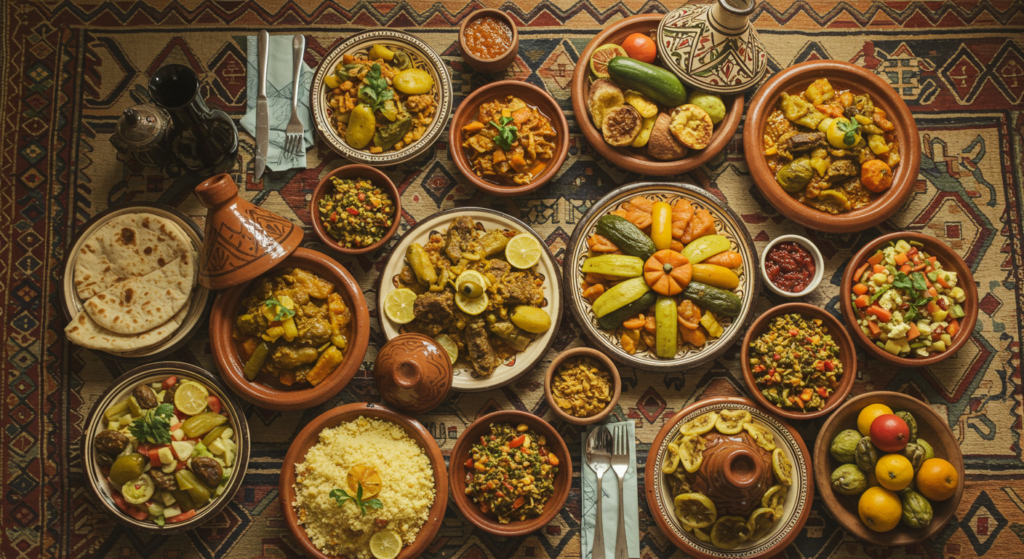
Marrakesh’s culinary scene is heavily influenced by Berber cooking, celebrated for its simplicity, bold flavors, and use of local ingredients.
- Tagines: Named after the conical clay pot in which they are cooked, tagines are quintessentially Berber. Slow-cooked stews of meat, vegetables, and spices embody the Berber approach to hearty, communal meals.
- Couscous: Often served on Fridays, this dish is a staple in Berber households, prepared with steamed semolina grains and a mix of vegetables and meats.
- Herbal Teas: The Berbers are known for their love of herbal infusions. Traditional mint tea, or “Berber whiskey,” is a symbol of hospitality across Marrakesh.
Berber cuisine reflects the Amazigh people’s deep connection to the land, highlighting the use of locally sourced ingredients and traditional cooking methods.
Art and Handicrafts: The Berber Touch
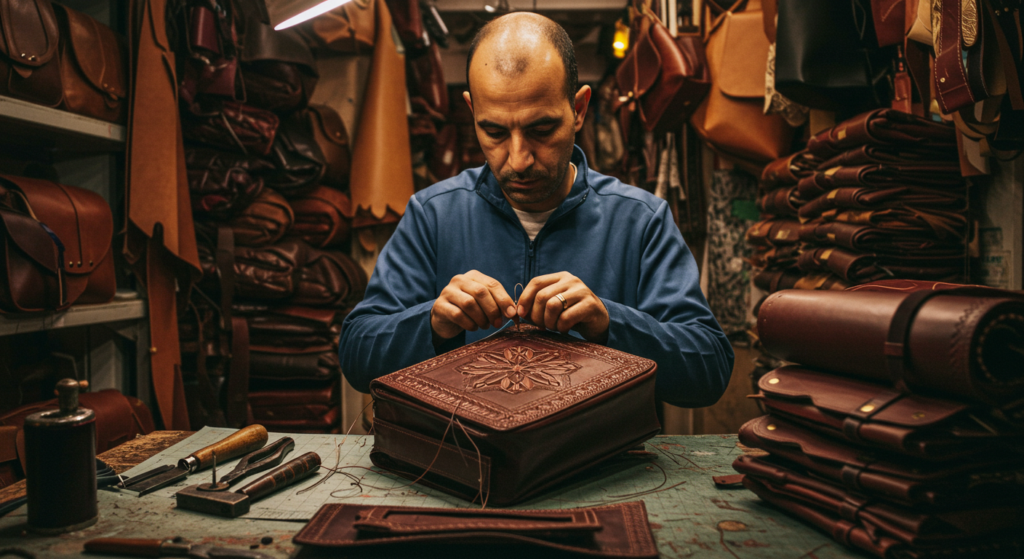
The vibrant souks of Marrakesh are a testament to Berber artisanship, showcasing handcrafted items that reflect centuries of tradition.
- Carpets and Textiles: Berber rugs are among the most sought-after items in Marrakesh. These intricately designed textiles tell stories through their patterns and colors, each rug unique to its maker.
- Jewelry: Berber silver jewelry, often adorned with bold geometric designs, is a representation of Amazigh identity and cultural pride.
- Pottery and Ceramics: Earthenware pots and brightly colored ceramics in the souks highlight Berber expertise in functional and decorative crafts.
Shopping in Marrakesh’s souks offers a direct connection to Berber culture, with many artisans sharing the history behind their creations.
The Berber Language and Music in Marrakesh
The Amazigh language, Tamazight, is still spoken by many Berbers in Marrakesh and the surrounding areas. This linguistic heritage is accompanied by a rich tradition of music and oral storytelling.
- Traditional Instruments: The oud (a stringed instrument) and bendir (a type of drum) are integral to Berber music, often performed during festivals and celebrations.
- Folklore and Stories: Berber storytelling is a cherished tradition, preserving the community’s history, values, and beliefs through spoken word.
Visitors to Marrakesh can experience Berber music and storytelling during cultural festivals or by venturing into nearby Berber villages.
Berber Culture in Marrakesh Today
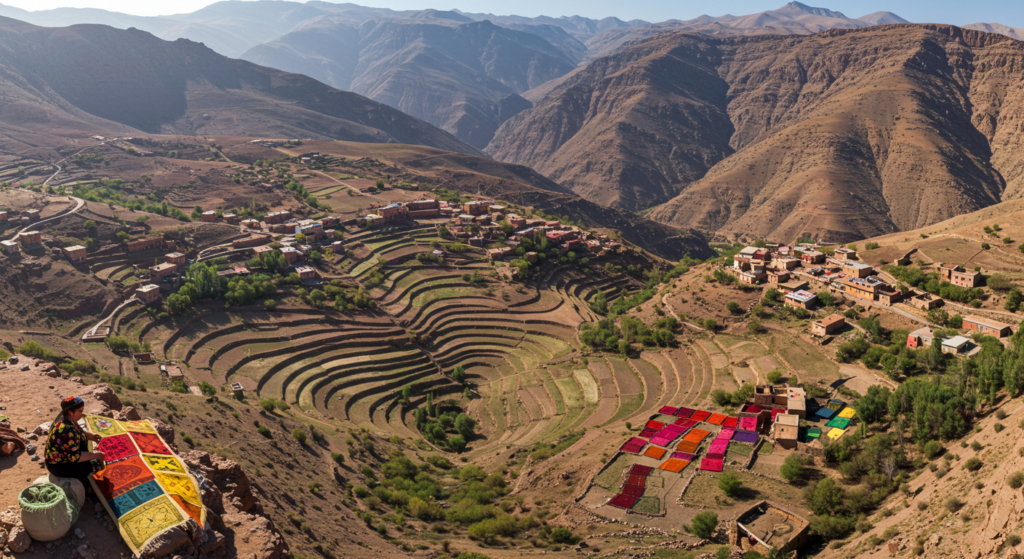
While Marrakesh has grown into a cosmopolitan hub, its Berber roots remain deeply entrenched.
- Berber Markets: Weekly markets, such as those in nearby villages, are vital for trading goods and maintaining traditional practices.
- Cultural Festivals: Events like the Marrakesh Popular Arts Festival celebrate Berber music, dance, and art, keeping these traditions alive.
- Tourism and Hospitality: Many tours and excursions in Marrakesh emphasize the Berber connection, offering visitors insights into Amazigh life in the Atlas Mountains and beyond.
Why Berber Influence Matters
The Berber influence in Marrakesh isn’t just historical—it’s a living, breathing part of the city’s identity. From the architecture that defines the skyline to the flavors that tantalize the palate, the Amazigh people’s legacy is an integral thread in Marrakesh’s cultural fabric. Exploring these influences offers travelers a deeper understanding of the city’s soul, connecting them to traditions that have stood the test of time.
Conclusion
To experience Marrakesh is to immerse oneself in Berber culture in marrakesh. Whether marvelling at the artistry of a handmade rug, savoring a traditional tagine, or wandering through Medina’s clay walls, the Amazigh influence is everywhere. It’s a journey into history, craftsmanship, and a way of life that continues to shape this remarkable city.





